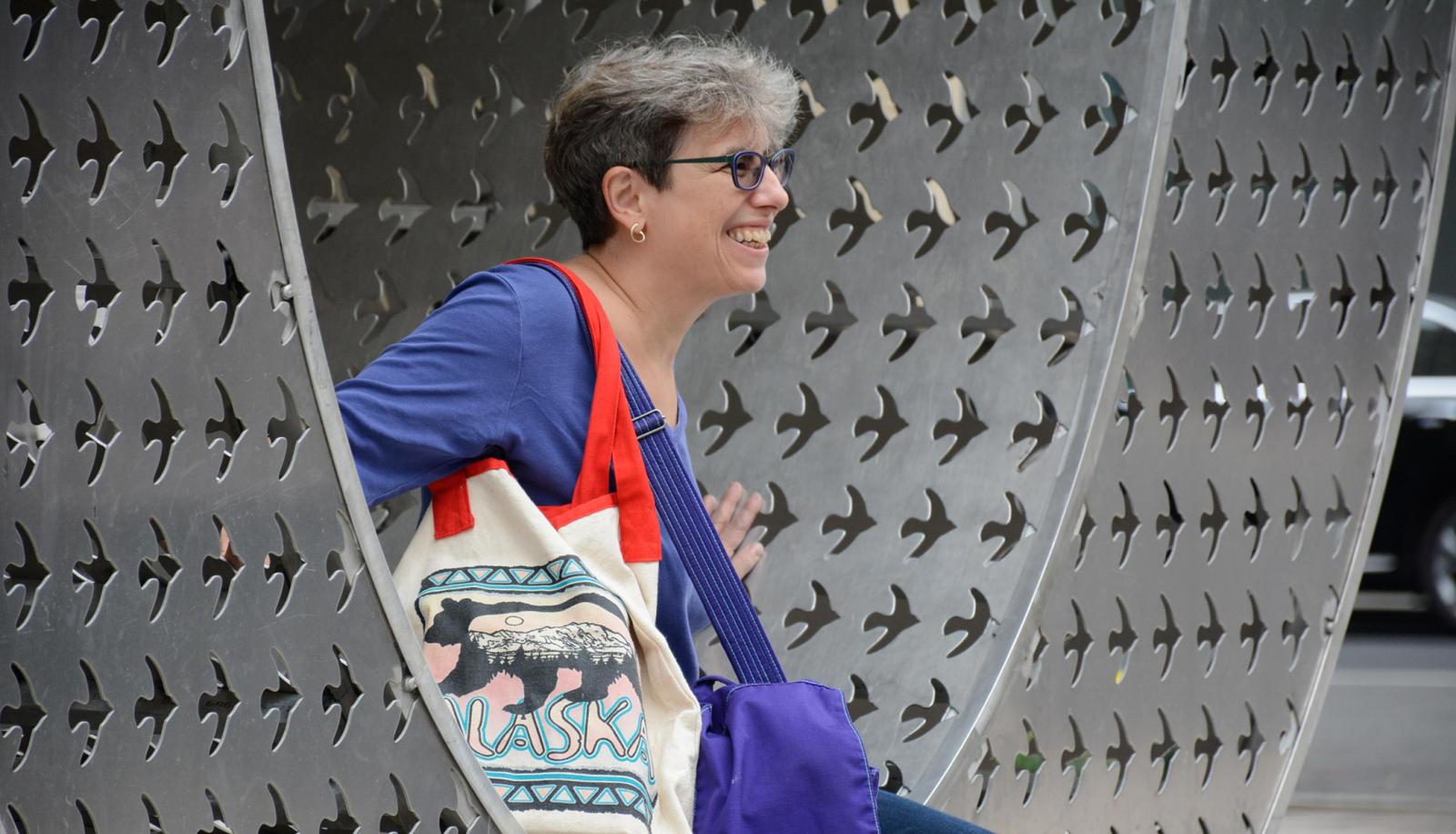For Women’s History Month, the UMD ADVANCE Program is celebrating female faculty who have been “firsts.” They have selected MAPP Professor Ronit Eisenbach who, last year, became the first woman named as a full professor of architecture in MAPP’s 50-year history.
“We are extremely proud of our colleague, Professor Ronit Eisenbach, for being recognized by the UMD ADVANCE Program, as they celebrate "firsts" among women faculty,” MAPP Interim Dean Don Linebaugh said.
A great achievement in its own right, Eisenbach, who is also an artist and art curator, has broken down gender barriers her entire life.
As a child in the early 1970s, Eisenbach and three friends made the local newspaper by being the first girls to enroll in a woodshop class offered at a local settlement house in the Chelsea neighborhood of New York City where she was raised. She was also the first girl to have a Bat Mitzvah at her synagogue.
After graduating from the Rhode Island School of Design in 1986 with both a Bachelor of Fine Arts and a Bachelor of Architecture, Eisenbach interned at Payette Associates in Boston. There, Janet Baum, the large firm’s only female principal, was one of her mentors.
Upon completing her internship, Eisenbach went on to earn a Master of Architecture in 1993 at the Cranbrook Academy of Art outside Detroit. After graduating from Cranbrook, she took a position at the University of Detroit Mercy School of Architecture, becoming the first female tenured faculty member in 1998. Eisenbach joined the University of Maryland in 2002 and was promoted to full professor 16 years later.
Gender parity in architecture has improved drastically over the past half-century, with women now accounting for almost half of all architecture students and 40 percent of those applying for licensing, according to The New York Times. However, less than a third of AIA members are female and just 17 percent of partners or principals in architecture firms are women.
“A real challenge is the glass ceiling at the upper leadership in many firms, and women dropping out from getting licensed,” Eisenbach said. “The culture is shifting. We have many talented female designers in our program now. Our female students have created a strong women-in-architecture group. Our lecture series celebrates women who are practicing today.” You can read about the upcoming Women Leading Architecture event here, and see the list of lectures here.
At UMD, Eisenbach teaches both graduate and undergraduate architecture studios, contemporary theory and an introductory course on the built environment. She has led several multidisciplinary, community-driven projects that explore the perception of place, often pairing design with other humanities-based disciplines such as dance and sculpture, and has worked with students to develop several place-based public art installations throughout the region. She was one of the first professors to have a course selected by UMD’s Academy for Innovation & Entrepreneurship as a “Fearless Ideas Course.” Eisenbach also manages and curates MAPP’s Kibel and Linear Galleries, both of which aim to provide exposure to creative expressions reflecting or influence the built environment.

